Cooling system and backplate
Of course, the generated waste heat is directly related to the recorded power, for which the cooling solution is responsible for optimum dissipation. This rather massive cooling system relies on a large lamella heat sink and a plate made of cast aluminium for stabilizing the structure and cooling of some components, which must be cooled by the air flow.
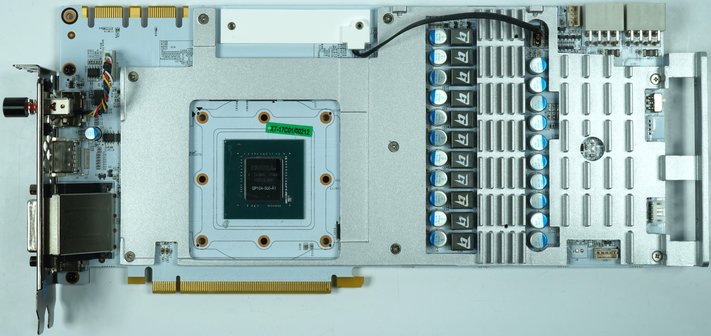
The cooling for voltage converters and memory must be used, as in the case of e.g. MSI and EVGA, it is precisely this assembly and Loosen the cooling frame between the radiator and the board, which we also like to call a sandwich plate. However, this concept is still justifiable in these areas of performance.
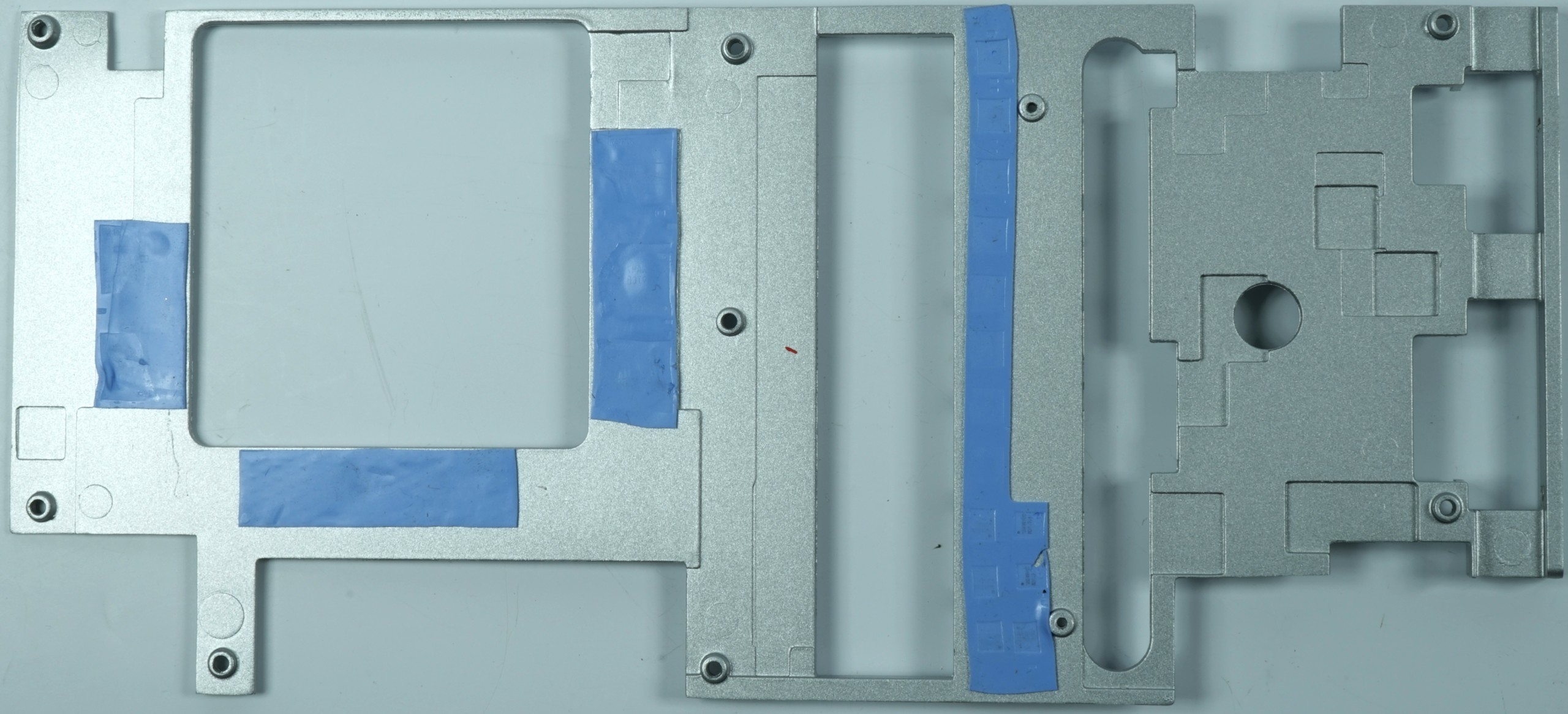
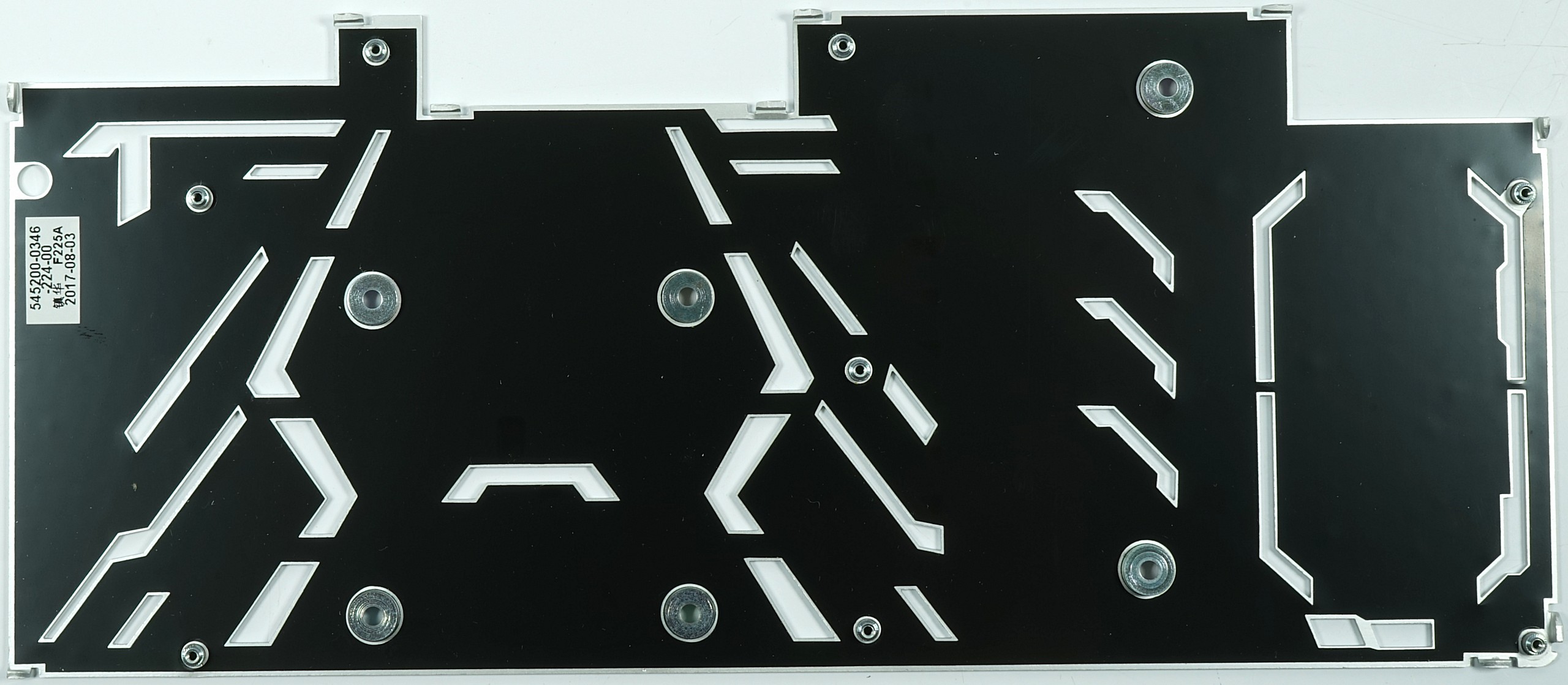
| Cooling system at a glance | |
|---|---|
| Type of cooler: | Air |
| Heatsink: | Copper heat sink for the GPU |
| Cooling fins: | Aluminum, vertical alignment related |
| Heatpipes | 3x 8 mm and 1x 6 mm, copper composite, nickel-plated |
| VRM cooling: | GPU and memory VRM via mounting frame |
| RAM cooling | via mounting frame and indirectly via the heatsink |
| Fan: | 3x 9 cm fan modules 9 rotor blades each no semi-passive regulation |
| Backplate | Aluminum, blackened no cooling function |
The cooler itself is a huge and above all heavyweight Bolide, whose copper heat sink feeds a total of four 8 mm and a 6 mm heatpipe made of composite material with the absorbed GPU waste heat.
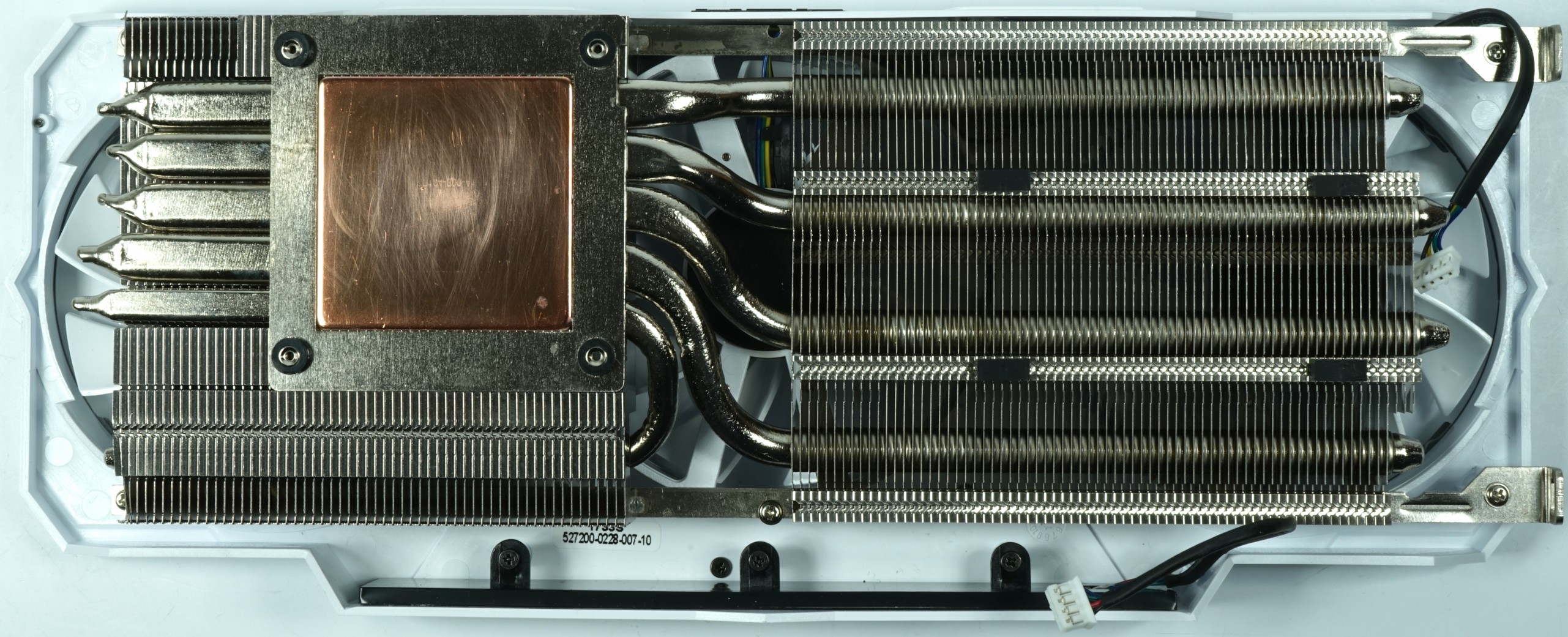
The three 90 mm fans used, with their 9, fairly steeply employed rotor blades per fan, are designed for throughput rather than for pure uniform static pressure. However, we will have to come back to these fans later, when it comes to fan control and speeds, because there is some need for clarification.
Fan curves and noise emission ("volume")
The fan curves show that KFA2/Galax, like Zotac before it, does not require a passive mode, i.e. a fan shutdown. With approx. However, 1060 rpm, the fans are still, almost inaudible, at approx. 32.5 dB(A). You can leave it that way, even if it is surprising at first. Only some lower frequency fractions interfere, if at all. Under load, the whole thing remains even in the closed housing under 1500 rpm, which is very good and also quite quiet.
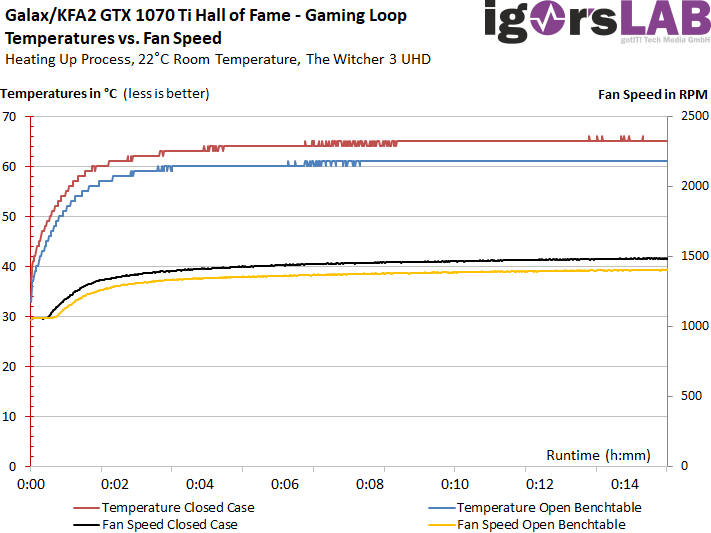
The whole thing doesn't look much different with the stress test. In summary, the card with the three fans can't be a quiet wallflower, but it still remains quiet enough to play at the front of the hall of the best.
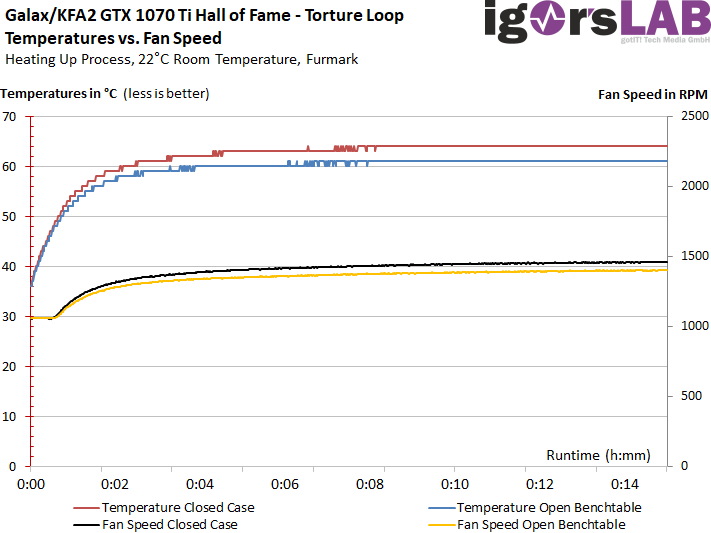
The card has reserves to make the fans rotate lower. It would definitely work, but then cost at least one boost step.
| Measurements for fans and noise emission |
|
|---|---|
| Fan speeds Open Benchtable Maximum |
1419 rpm |
| Fan speeds Open Benchtable Average |
1365 rpm |
| Fan Speeds Closed Case Maximum | 1485 rpm |
| Fan Speeds Closed Case Average | 1380 rpm |
| Noise emission (air) Maximum |
35.2 dB(A) |
| Noise Emission (Air) Average |
34.5 dB(A) |
| Noise Emission (Air) Idle | <32.5 dB(A) |
| Sound characteristic / Hearing impression |
light engine noise< 1 Hz moderate air/demolition noise hardly or No voltage transformer noises |
To illustrate our subjective audio impression once again, we now have a high-resolution graphic with the complete frequency spectrum of our laboratory measurement:
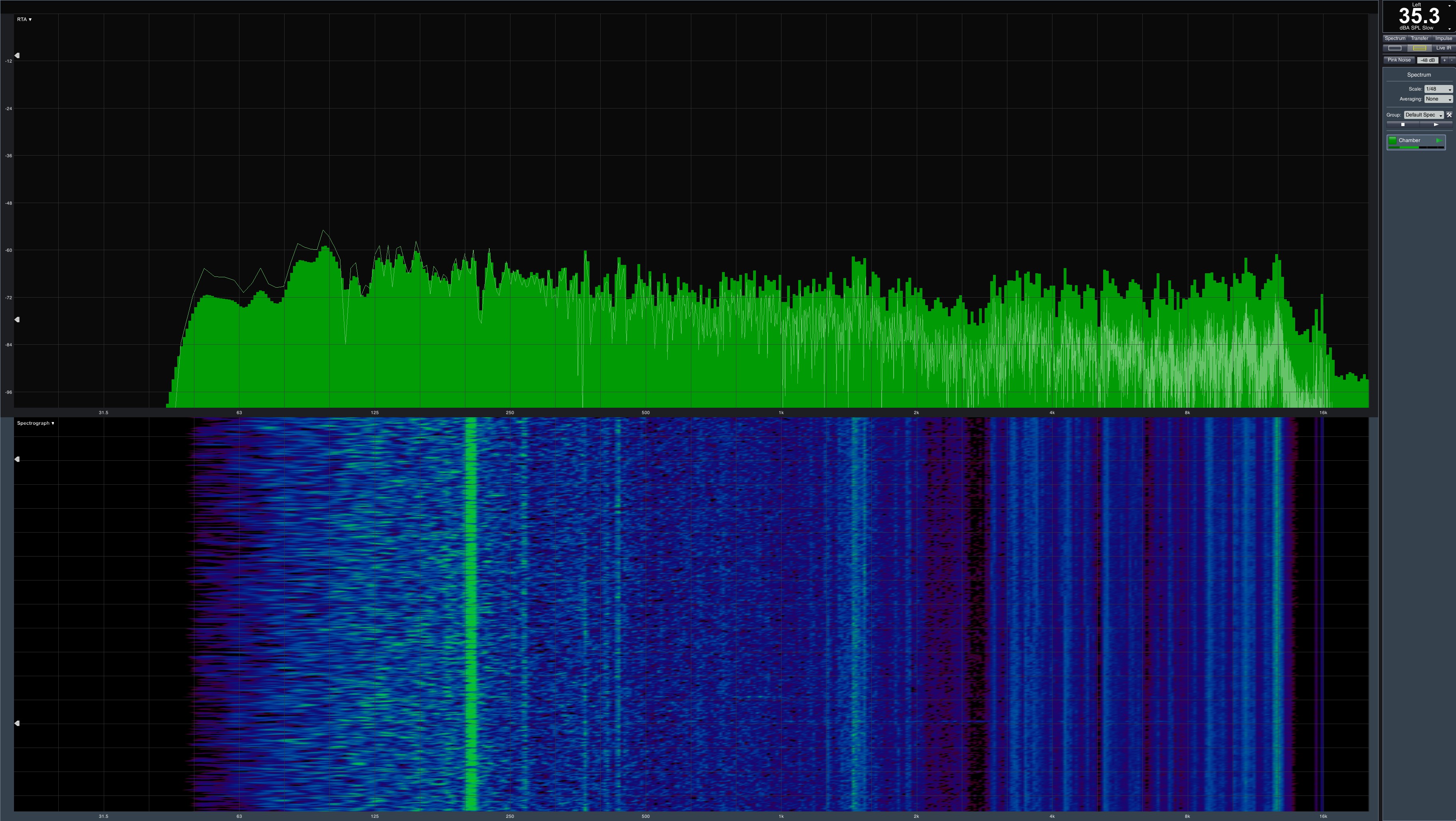
The 35.3 dB(A) is good and more than acceptable for such a map and the measured temperatures. There would even be significant reserves down, which could have a bit of an impact on the boost steps, depending on the housing ventilation.


































Kommentieren